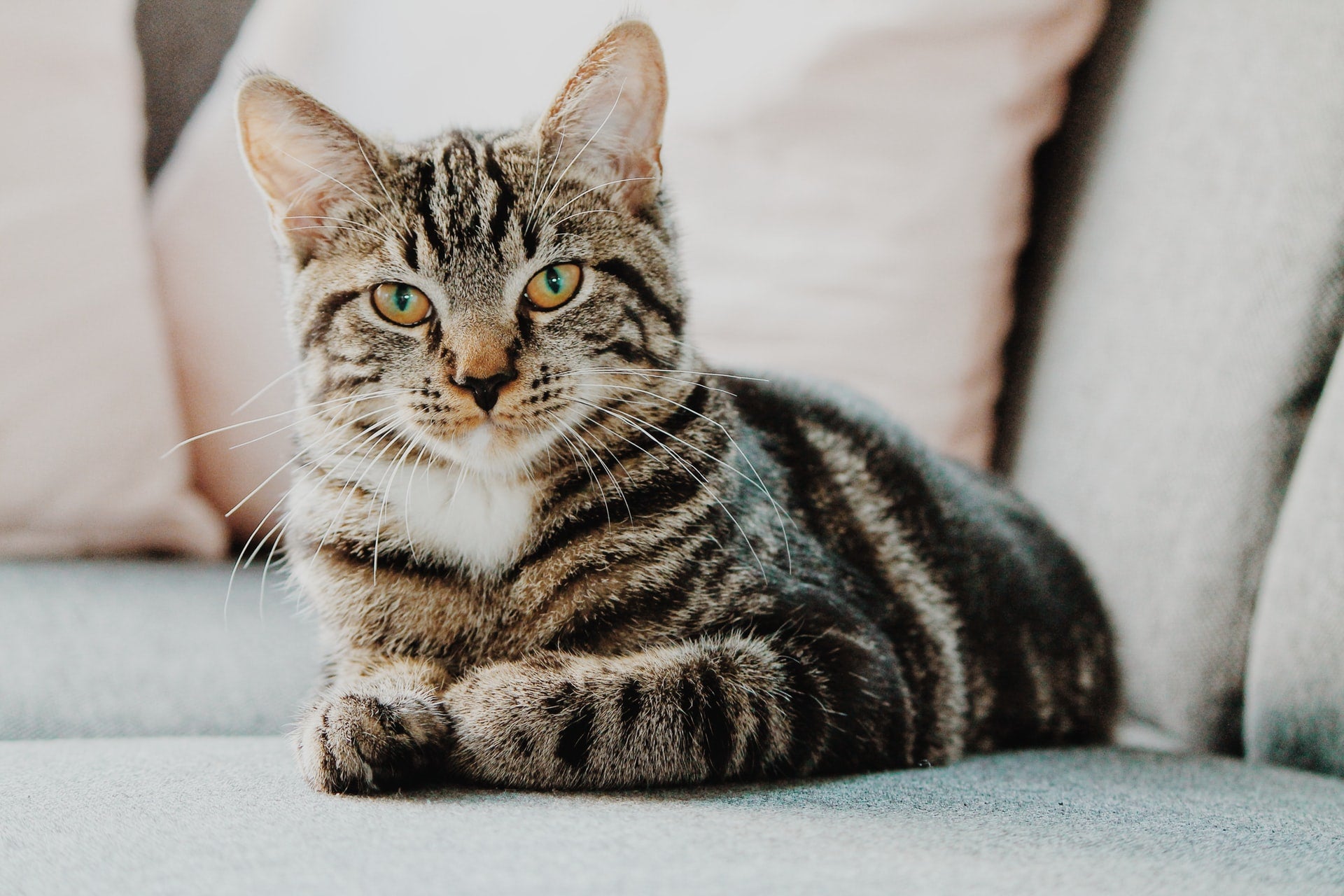Cats are known for their quirky antics. If you’re a cat owner, you’ve likely found yourself wondering whether your cat’s strange, sometimes frustrating behavior is normal.
Understanding what your kitty is thinking and feeling may seem like an impossible task, but all it takes is a little bit of “translating.” Your cat’s body language and behavior isn’t all random—in fact, some of those odd behaviors are signs that your cat is trying to communicate with you. Read on to learn about some common cat behaviors, and what they might mean.
Kneading
Kneading is when cats repeatedly push their paws in and against an object (usually a loved one’s lap, or something soft and fluffy). Because it resembles the action of kneading dough, many cat owners affectionately refer to this cat behavior as “making biscuits.”
Kneading is generally associated with comfort, which is why you’ll often see your cat kneading her bedding before a nap, or kneading your lap or chest while she joins you on the couch. This common cat behavior can also be a sign of affection, or a way for a stressed out kitty to self-soothe. Plus, it activates the scent glands in her paws, which helps her mark her territory.

Sleeping in Snug Spaces
While humans may prefer sprawling out on a spacious bed in order to sleep, cats prefer snug, tight spaces. If you’ve found your kitty hiding in a cardboard box, under the bed, behind the couch, or in the closet, you’re familiar with your cat’s love for confined spaces.
Because cats are natural predators, they have an instinct to both hide and hunt. Small spaces are the perfect hiding spots where your cat can observe her surroundings without feeling too exposed.
Cozy, tight spaces can also provide your cat with feelings of safety, warmth, and comfort—which is why when given a choice between two boxes, your cat will probably opt for the smaller one.
If your cat is often retreating to the same snug space, it means that she’s found a spot in your home that she considers a safe space. Whether it’s a bed, box, or area behind the couch, make sure there is at least one spot in the house that your cat knows is reserved just for her.

Head Butting
If your cat likes to bump her head against yours during your cuddle sessions, be assured that it’s not an act of violence. In fact, it’s the opposite—it’s your kitty’s way of saying she loves you! Cats have scent glands in their cheeks, so bumping them against you is her way of claiming you as her own.
When your cat bumps her face against your head or hand, she’s most likely showing you some love (and asking for some attention or head scratches in return.)

Chattering
When your cat sees a fly or some other potential prey that she can’t catch, you may notice a robot-like chattering as she stares at the inaccessible prey.
Chattering, often paired with “chirping,” generally indicates feelings of both excitement and frustration. If your kitty is intrigued by the birds or squirrels outside the window but isn’t able to get to them, you may notice some chattering.

Slow Blinking
A slow blink from a cat is one of the biggest compliments you can get from your furry friend. When your cat stares at you and blinks slowly, or winks, she is using her body language to tell you that she trusts you and feels comfortable in your presence. If you have multiple cats, you may notice them blinking at each other as well.
Send the same signal to your cat by slow blinking in return. And just like that, you’re communicating with your cat!

Signs of a Sick Cat
Every cat has their own unique personality; while they share many of the same communication methods, not all cat body language and behavior is the same.
Some signs your cat may need to visit the vet include:
- Isolating more than usual
- Lethargy
- Aggression
- Eating more or less than usual
- Unexplained weight changes
- Vomiting or stomach issues
- Excessive hairballs
- Itching and scratching
- Hair loss
- Lumps and bumps
- Signs of discomfort
If you notice any abnormalities in your cat’s disposition, appetite, digestion, weight, or skin and coat, talk to your vet. Significant changes in cat behavior and habits can be indicators of health issues such as seasonal allergies or digestive problems.
Keep your cat feeling happy and healthy with a well-balanced, nutrient-rich diet. Depending on your cat’s needs, you may also want to consider adding supplements to her diet.
PetHonesty’s Digestive Probiotics+ Powder for Cats promotes healthy digestion and a healthy immune response; Omega-3 Fish Oil for Dogs and Cats promotes joint, brain, heart, gut, and skin and coat health.
Sources:
https://www.tuftandpaw.com/blogs/cat-guides/the-definitive-guide-to-cat-behavior-and-body-language
https://getyourpet.com/10-common-cat-behaviors-explained/
https://www.aspcapetinsurance.com/resources/14-weird-cat-behaviors-explained/
https://www.thesprucepets.com/weird-cat-behaviors-explained-553972













